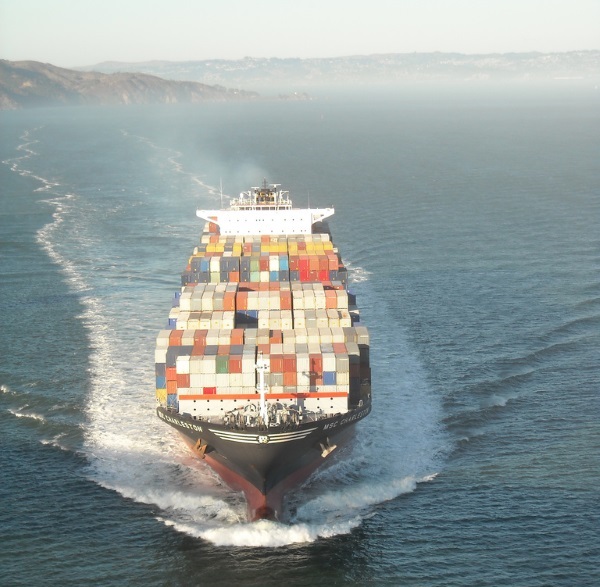2023 Ends With Two Major Shipping Passages Experiencing Disruptions
 Shipping’s two major shipping passages, forged through decades of works and lives lost under construction, the Panama Canal and the Suez Canal, facing serious disruption, thus, impacting freight rates and the flow of goods. In its latest weekly report, shipbroker Intermodal said that “as 2023 draws to a close, the global shipping industry confronts significant challenges due to environmental and geopolitical issues impacting the Panama and Suez Canals. These pivotal maritime passages are experiencing disruptions that compel the industry to adapt, affecting global trade routes and logistics rapidly”.
Shipping’s two major shipping passages, forged through decades of works and lives lost under construction, the Panama Canal and the Suez Canal, facing serious disruption, thus, impacting freight rates and the flow of goods. In its latest weekly report, shipbroker Intermodal said that “as 2023 draws to a close, the global shipping industry confronts significant challenges due to environmental and geopolitical issues impacting the Panama and Suez Canals. These pivotal maritime passages are experiencing disruptions that compel the industry to adapt, affecting global trade routes and logistics rapidly”.

Source: Intermodal
According to Ms. Chara Georgousi, Research Analyst with Intermodal, “in 2021, the Panama Canal facilitated the transit of approximately 291.7 million LT of cargo, increasing to around 294 million LT in 2022, according to official statistics from the Panama Canal Authority. However, in 2023, a severe drought significantly reduced the canal’s transit capacity, leading to an estimated decrease in cargo transit to about 285.7 million LT. The Canal, under normal conditions, handles between 36 and 38 vessels per day. However, due to the drought and El Niño, transits were reduced to as low as 18 slots per day. By December 2023, the number of daily crossings was limited to 22 vessels. This environmental challenge has diminished the canal’s operational efficiency, compelling vessels to choose longer, costlier routes and disrupting traditional trade flows. The drought-induced congestion in the Panama Canal has severely disrupted the US grain trade. Shippers, especially those transporting crops from USG to Asia, must now seek longer routes such as around South America, Africa, or through the Suez Canal. This shift resulted in longer wait times for bulk carriers, from a week in October to nearly three weeks by late November, and a surge in the BDI to an 18-month high in early December.

The increased freight costs and extended shipping times have reduced the competitiveness of US grains and decreased their use of the Panama Canal for East Asia-bound shipments. US grain shipments are now increasingly rerouted from Pacific NW ports, incurring additional rail transportation costs over cheaper barge deliveries. This situation has also had a significant impact on the US refining industry. Struggling with the challenges of shipping cargoes to Latin America, US refiners are now turning their attention to Europe. An increased number of cargoes previously destined for the South American West Coast are now increasingly redirected to the continent. On the other hand, we have seen instances such as the product tankers Cururo, Green Sky, and High Loyalty, which after being unable to secure a slot in the Panama Canal, have chosen a significantly longer route, crossing the Strait of Magellan, and then proceeding up the Pacific coast before reaching their discharge destinations. This detour takes about 32 days, compared to the usual route through the Panama Canal, which typically spans about 23 days. Consequently, MR freight rates on the Transatlantic route have soared, with some vessels delayed in the Panama Canal and others taking the lengthier journey around Cape Horn”.

Source: Intermodal
Ms. Georgousi added that “in the meantime, amidst the escalating tensions in the Red Sea region, particularly from Houthi-controlled areas in Yemen, the Suez Canal’s role as a pivotal maritime passage has come under significant strain. In 2022, this canal witnessed the transit of approximately 23,000 vessels, carrying a total of 1.4 billion tons of cargo, marking a noticeable increase from the 21,700 vessels and 1.27 billion tons recorded in 2021. However, recent attacks on ships, such as the Al Jasrah and MSC Palatium III, have intensified security concerns. Leading container operators are adapting by either suspending or rerouting their shipments, which profoundly affects one of the world’s most frequented maritime trade corridors. The consequent surge in war risk insurance premiums is a testament to these growing apprehensions. In light of these developments, shipping costs are expected to climb, potentially triggering significant global delays. Some operators are now contemplating a detour via the Cape of Good Hope, circumventing the high-risk zones of the Red Sea. This alternative path, while safer, introduces considerable economic implications. The extended journey around Africa could lead to a dramatic increase in voyage lengths, thereby exponentially raising operational expenses. This shift would notably affect Asia to Europe container trade, which predominantly relies on the Suez Canal passage and accounts for approximately 25% of the global container ton-miles. The redirection of these routes could have far-reaching effects on global shipping and trade, with the additional costs likely being passed on to consumers, thereby influencing the prices of various goods”, she added.
Intermodal’s analyst concluded that “as we enter 2024, the shipping industry’s focus will be on developing adaptable, efficient, and secure maritime trade strategies to address these emerging risks”.
Nikos Roussanoglou, Hellenic Shipping News Worldwide

 Hellenic Shipping News Worldwide Hellenic Shipping News Worldwide, Online Daily Newspaper on Hellenic and International Shipping
Hellenic Shipping News Worldwide Hellenic Shipping News Worldwide, Online Daily Newspaper on Hellenic and International Shipping





















 PG-Software
PG-Software